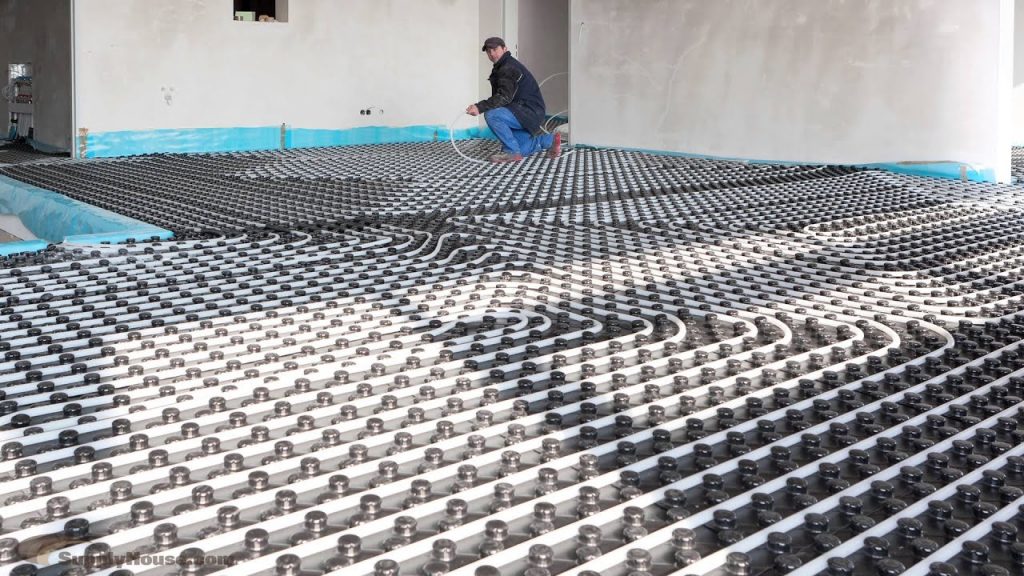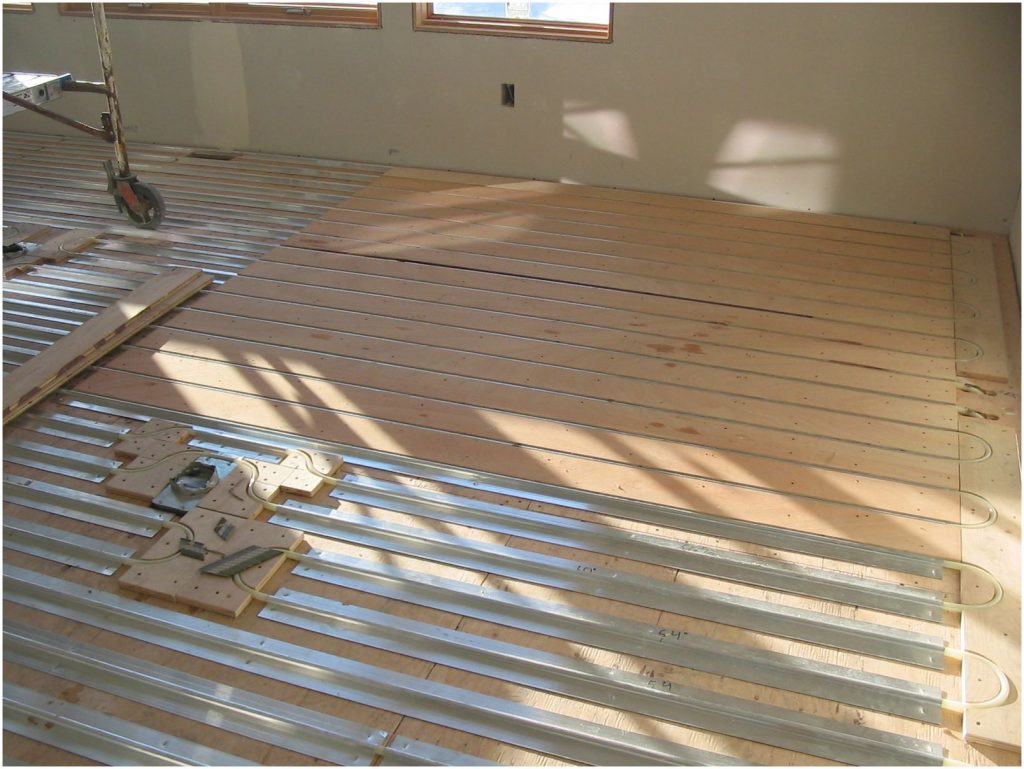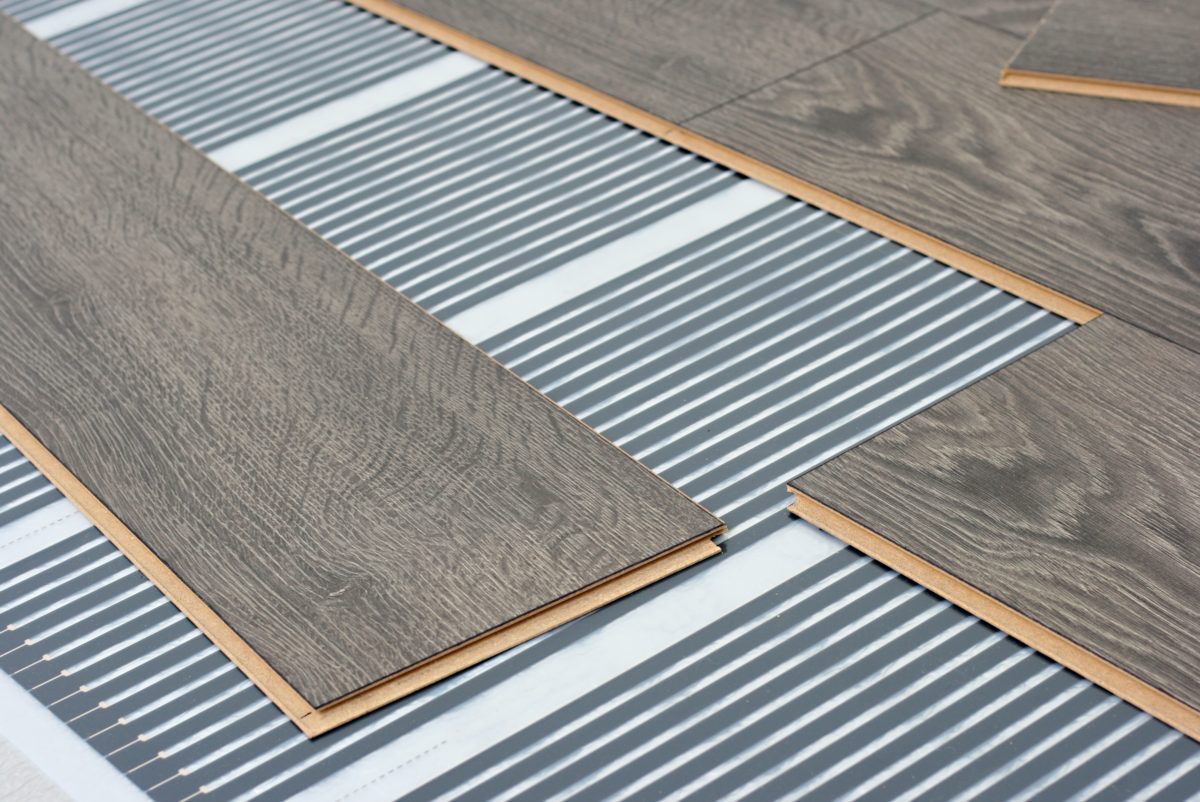You’ve probably heard about radiant heating, a relatively newer technology that delivers comfort via hydronic panels installed underneath the floor. There are many things to love about this home heating alternative. For one, it operates silently, in contrast to roaring forced-air systems or clicking baseboards. Another benefit, one that particularly appeals to allergy sufferers and those concerned about health – radiant heat involves no ductwork, so it does not recirculate indoor air pollutants and irritants throughout the home. Also, the energy-efficient attributes of the system are a major draw for budget-minded or eco-conscious homeowners. Often overlooked among all these benefits is a less obvious, but no less appealing, fact about radiant heat: It’s invisible.
Freedom
We’re so used to living amid our heating systems that we almost take the frustration for granted. The radiator hulks in the corner, rendering that portion of the room unusable for any other purpose. But for the presence of the baseboard, you would have arranged the bedroom furniture in a completely different way. Now consider radiant heating, whose components live entirely beneath the flooring, whether that be wood, tile, or wall-to-wall carpeting. Since it’s out of the way, radiant heat never interferes with your plans for the space. You gain not only some extra square footage, but also complete freedom to organize and decorate the room as you see fit. When you think of radiant heat in that way, it’s a wonder that we put up with bulky, inconvenient heating system components for so many decades!

Comfort
One way or another, conventional heating systems are noticeable. Take today’s most common type, forced-air heating, as an example. When it kicks in, heat blasts into the room. Gradually, the room cools down, only to receive another blast. Baseboard and radiator heating are likewise noticeable: The room is warmest, perhaps too warm, right next to the unit. The farther away you go, the cooler the room gets, until you’ve reached the other side of the space (where you might feel the need to put on a sweater). With radiant heat, there are neither blasts nor variations. There’s simply steady, even heat that calls no attention itself.
Savings
There’s only one place you notice radiant heating, and that’s on your monthly utility bill. Radiant heat consumes less energy than conventional systems, in part because it’s everywhere. Picture any room in your house. Inevitably, its conventional source of heat—be it a vent, baseboard, or radiator—is doing its best to hide somewhere on the perimeter. Radiant flooring, however, extends across the entire space. Given that level of virtually complete coverage, radiant heat needs far less energy to maintain a comfortable temperature than does a heat source that’s confined to a corner. Further, we all know that heat rises. So, while conventional heating systems pump a great deal of heat toward the ceiling, radiant flooring puts the comfort where it’s needed most, at floor level. Invisible in every other way, radiant heat makes itself known when it comes to money savings over the long term.

Radiant heat is definitely more efficient in smaller, snug homes with lower roofs, but it might not always be the greenest solution in homes with bigger rooms. It’s recommended that you consult with a reputable heating contractor like North East Hydronic Radiant to see if radiant heating is a sensible way to go. Another thing to ponder upon is that many states offer financial incentives to upgrade home and commercial heating systems in ways that boost energy efficiency. Check out the free Database of State Incentives for Renewable Energy (DSIRE) to find out what kinds of tax rebates or other incentives might be available in your neck of the woods.

